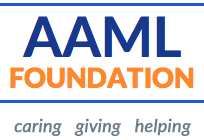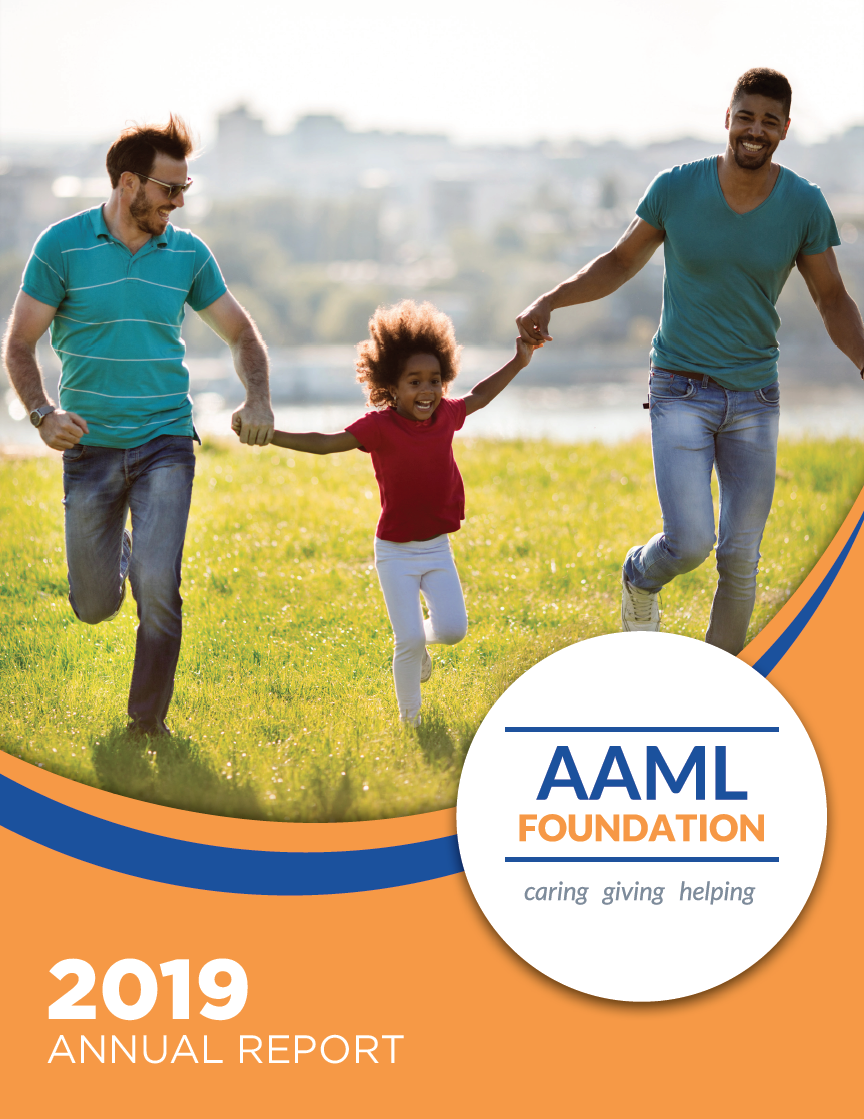WELCOME TO OUR “BV” NEWSLETTER!
 On behalf of the AAML Foundation, I am pleased to welcome you to the first issue of the Forensic and Business Valuation Division Newsletter F&BV NEWS AND VIEWS. This newsletter is a collaboration of the Foundation’s Forensic and Business Valuation Division and our Publicity Committee.
On behalf of the AAML Foundation, I am pleased to welcome you to the first issue of the Forensic and Business Valuation Division Newsletter F&BV NEWS AND VIEWS. This newsletter is a collaboration of the Foundation’s Forensic and Business Valuation Division and our Publicity Committee.
There are currently 31 Members of the Forensic and Business Valuation Division, affectionately referred to by the Foundation Board and others as our “BVs”. The 28 Charter Members joined when the Division was created in 2014. An additional 10 members have been admitted since then. To be admitted to the Division, a prospective member must certify that 50% or more of his or her practice is in the field of matrimonial law, including business valuation, forensics, tax and/or litigation support, and that he or she is in good standing with all professional organizations with whom he or she is affiliated and has not been subject to any professional discipline. Applications must contain at least two references from either AAML Fellows or Charter Members of the Division.
This newsletter is an opportunity for the BVs to “show their stuff” by submitting articles about topics of general interest relating to family law-oriented forensic accounting. It is also an opportunity for all AAML Fellows to obtain, free of charge, access to the collective wisdom of the best family law forensic accountants in the country.
The featured article in this issue is titled Assessing Additional Economic Risk Due to COVID-19 and was written by Charter BV Ron Seigneur of Lakewood, Colorado. As we know, certain sectors of the economy are experiencing the effects of COVID more seriously than others. In this article, Ron gives us a framework for analyzing the likelihood of particular businesses to be harmed by the COVID economy, and/or to benefit from the COVID relief passed by Congress earlier this year. It is extremely well written, timely, and useful. I know it will help you in your practice, and I know you will enjoy reading it. More to come!
With warm regards,
Lawrence A. Moskowitz
AAML Foundation President
Assessing Additional Economic Risk Due to COVID-19
 Somewhere between my third and fourth Zoom call on business appraisal and economic damages issues on a recent workday, I was struck with a thought on how to create an analytical framework to assist in assessing the impact of this incredibly unique circumstance that has increasingly invaded pretty much every aspect of our appraisal work just now.
Somewhere between my third and fourth Zoom call on business appraisal and economic damages issues on a recent workday, I was struck with a thought on how to create an analytical framework to assist in assessing the impact of this incredibly unique circumstance that has increasingly invaded pretty much every aspect of our appraisal work just now.
Business and IP appraisers will need to remain extremely flexible in the days and weeks and months ahead as we continue to gain a comprehension of the short and long term impact of COVID-19 on most every facet of how we do business and generally just go about our lives. We will need to adjust our projected cash flows, modify the unsystematic risk in our discount rates, tamp down our market multiples, and otherwise do our best to capture the impact of all of this within the valuation methods we choose to apply in any given circumstance to derive indications of value, regardless of the engagement purpose.
I also found some insightful remarks by Edwina Tam, a partner at Deloitte in Hong Kong, which were included in the May 2020 issue of Business Valuation Update.[1] Ms. Tam points out that, in determining the nature and extent of the impact of current market uncertainties on the business and valuation assumptions, a number of specific issues will need to be considered, such as store or facility closures, customer loss or decreased traffic, production delays, risk of losing significant contracts, and others. “Implicitly, these uncertainties need to be reflected in the cash flows; however, a risk-appropriate discount rate also needs to be considered,” she says. “There is no set approach to account for market uncertainties as the impact will be different for different businesses in different regions.”
As I try to take all of this in and relate it to the business appraisal and related work we do, I wonder if there is an appropriate way to address an estimate of how this will impact the value of closely held businesses going forward, as of a given point in time. I believe we need to expand our thinking with respect to how we consider and assess the estimated impacts on the specific business enterprise and its industry sector we are confronted with in an engagement. How to quantify the risk associated with the short- and long-term impacts of the COVID-19 virus is the magical question. Another way to put this is while we now have a reasonably good grasp of when the onset of COVID-19 was “known and knowable”, valuation analysts are now incredibly challenged, like never before in many instances, with the necessity to make a determination of the duration and depth of the economic impact within each assignment undertaken in the post COVID-19 era. Below is an analytical framework that can be utilized by the valuation professional to identify the attributes that may apply to any particular appraisal assignment where the subject company will be affected by COVID-19.
BUSINESS CHARACTERISTICS AND COVID-19 RISK FACTORS: SUMMARY
Note: The Risk Ratings are designated as “High”, “Medium” or “Low” and are the valuator’s reasoned assessment of the factors that are particular to the subject ownership interest as of the date of valuation[1]. It is critically important to be cognizant of what was considered “known and knowable”[2] as of the valuation date as the focus of this assessment.
Industry/External
1. Is this industry more highly susceptible to closing? Short-Term RISK: Low / Long-Term RISK: Low
2. Are there significant innovations that could change the industry? Short-Term RISK: Low / Long-Term RISK: Low
3. Will the industry be impacted by supply chain issues upon re-opening? Short-Term RISK: Low / Long-Term RISK: Low
4. Does the industry traditionally have customer loyalty or will there potentially be shifts in customers post COVID-19? Short-Term RISK: Low / Long-Term RISK: Low
Physical Operations – Service Entities
5. Was the business shut down? Short-Term RISK: Low / Long-Term RISK: Low
6. Do clients come individually or in groups? Short-Term RISK: Low / Long-Term RISK: Low
7. Do clients receive services individually or in groups? Short-Term RISK: Low / Long-Term RISK: Low
8. Do services require “hands-on” (dental, hair salons,)? Short-Term RISK: Low / Long-Term RISK: Low
9. Are client contacts short duration (haircuts) or long duration (concerts)? Short-Term RISK: Low / Long-Term RISK: Low
10. Is there a pent-up demand for the services? Short-Term RISK: Low / Long-Term RISK: Low
11. Can services be provided remotely? Short-Term RISK: Low / Long-Term RISK: Low
12. Can services be delivered or picked-up? Short-Term RISK: Low / Long-Term RISK: Low
13. Have clients been lost that are unlikely to return? Short-Term RISK: Low / Long-Term RISK: Low
14. If recommended “social distancing” is enforced, does it limit the number of clients that can be served? Short-Term RISK: Low / Long-Term RISK: Low
15. Are employees required to spend significant time in close physical contact with other employees? Short-Term RISK: Low / Long-Term RISK: Low
16. Is Personal Protective Equipment necessary and available? Short-Term RISK: Low / Long-Term RISK: Low
17. Can the operations be restructured based upon COVID-19 concerns? Short-Term RISK: Low / Long-Term RISK: Low
18. Are qualified employees available? Short-Term RISK: Low / Long-Term RISK: Low
19. Will furloughed employees be likely to return? Short-Term RISK: Low / Long-Term RISK: Low
20. What skills are required for the necessary workforce? Short-Term RISK: Low / Long-Term RISK: Low
Physical Operations – Products Entities
21. Was the business shut down? Short-Term RISK: Low / Long-Term RISK: Low
22. Can products be delivered or picked-up? Short-Term RISK: Low / Long-Term RISK: Low
23. Are employees required to spend significant time in close physical contact with other employees? Short-Term RISK: Low / Long-Term RISK: Low
24. Is Personal Protective Equipment necessary and available? Short-Term RISK: Low / Long-Term RISK: Low
25. Can the operations be restructured based upon COVID-19 concerns? Short-Term RISK: Low / Long-Term RISK: Low
26. Does the demand for the product remain strong? Short-Term RISK: Low / Long-Term RISK: Low
27. Were significant contracts lost and how likely are they to be reinstated? Short-Term RISK: Low / Long-Term RISK: Low
28. Are the suppliers available and stocked with the necessary raw materials? Short-Term RISK: Low / Long-Term RISK: Low
29. Are supplies sourced domestically or from foreign sources? Short-Term RISK: Low / Long-Term RISK: Low
30. How will technology change the way business is conducted? Short-Term RISK: Low / Long-Term RISK: Low
31. Will labor be readily available with the proper skills and training as demand returns? Short-Term RISK: Low / Long-Term RISK: Low
Financial Risk: Current Status and Historical Trends
32. Does the Company have significant excess working capital? Short-Term RISK: Low / Long-Term RISK: Low
33. Is there significant debt? Short-Term RISK: Low / Long-Term RISK: Low
34. Does the Company have significant goodwill and has it been impaired? Short-Term RISK: Low / Long-Term RISK: Low
35. Does the Company have significant investment assets that have lost value? Short-Term RISK: Low / Long-Term RISK: Low
36. Did the Company receive PPP funds? Short-Term RISK: Low / Long-Term RISK: Low
37. Will PPP funds be utilized for forgivable expenses? Short-Term RISK: Low / Long-Term RISK: Low
38. Is there other economic assistance that should be considered, including deferral of expenses and state and local assistance? Short-Term RISK: Low / Long-Term RISK: Low
Management
39. Does management have a plan to fully reopen, close or modify any parts of the business closed down? Short-Term RISK: Low / Long-Term RISK: Low
40. Does management have the competence necessary to run the enterprise in a post COVID-19 environment? Short-Term RISK: Low / Long-Term RISK: Low
The indicated level of risk for each element can be adjusted from low to medium or high based upon the answers to the above questions. There may be different emphasis put on the risk factors for the short-term as opposed to the long-term for any given element. The identified elements are not necessarily all inclusive and the analyst should try to take a wide view of the circumstances present in any given assignment.
If this analysis is being used in conjunction with a Discounted Cash Flow model under an Income Approach where the future results of operations are being projected, care must be taken to not double count risk factors that are taken into account in the projection, as compared to any adjustments to industry and enterprise unsystematic risk. Regardless, this framework can also be useful in building support for the assumptions that will underlie the projected financial activity. There may be different risk factors and weightings thereon for projections that are “worst case”, “most likely” and “best case.”
Diving a bit deeper into the modeling of prospective cash flows and the impact of COVID-19 thereon, be reminded of the need to use your best efforts to first assess the estimated duration and depth of the impact on your valuation target and its industry sector. A number of critical questions emerge:
- Does the enterprise have sufficient working capital to sustain itself through whatever periods of economic slowdown or losses are being projected?
- Does the analyst need to put more emphasis on projecting out the balance sheet and capital structure of the enterprise than would have been necessary in prior periods?
- How much working capital is needed throughout the projection period, and is what once may have been considered excess now be considered to just adequate or falling short of the projected needs?
- How do any Paycheck Protection Program (PPP) funds enter into the picture of what is being forecast?
- How should the PPP proceeds and the operating expenses paid with such funds be treated for tax purposes within the DCF method being utilized?
- Does it make sense to consider different discount rates for different discrete periods within the period being projected to the point of future sustainability?
What we do know is that we now have a myriad of added complexities to consider in most valuation assignments we will be encountering in the months and likely years ahead. The cost and timelines for our work will increase, but often in an environment that will not be accommodating to these realities. Hopefully we will begin to get some clarity in the next several weeks and months with respect to the long term impact on the economy and specific industry sectors, like travel and hospitality, but we may not have a totally clear picture for years. This clarity may be more evident in certain industry sectors and geographic regions, with others lagging. In the meantime, a structured framework of this type to support your assumptions may be helpful as an addition to your workpapers and possibly within your expert reports.
(Note: I want to recognize the assistance of Charlotte Hart, CPA, CVA, in the preparation of this article.)
Ronald L. Seigneur, CPA/ABV, ASA, CVA, is managing partner of Seigneur Gustafson LLP in Lakewood, Colo. He can be reached at ron.seigneur@cpavalue.com.
Hot Off the Press: Read the 2019 Annual Report of the Foundation
Make sure you follow the Foundation by liking our Facebook page at www.facebook.com/AAMLFoundation to stay abreast of current news and Foundation events. While there, don’t forget to read the just released 2019 Annual Report to learn more about our grantmaking and fundraising activities. Through the generosity of our Fellows, Foundation Friends, members of the Forensic & Business Valuation Division and Sponsors, the Foundation was able to fund 37 individual grants during 2019, aggregating $185,000, to eligible charities located in twenty-two different states. With our Annual Meeting weeks away we encourage you to make your Billable Hour Donation now by logging into our Foundation Website, www.AAMLFoundation.org, and double-clicking the DONATE NOW button at the top right hand side to complete your gift. Let’s make 2020 a banner charity year for our grantees!!
COMING ATTRACTIONS: UPCOMING FOUNDATION EVENTS
Be sure to calendar the following Foundation events taking place at the Academy’s virtual Annual meeting this November.
- November 3, 5:10 pm to 6:10 pm – Bring your favorite adult beverage of choice for this year’s Annual Foundation Reception. While we will be virtual this year, attend and hear about our current activities and future plans. Come and enjoy the country honky-tonk music of Court ‘n’ Disaster. We won’t complain if you leave your chair to dance the event so long as you take a picture or video and post it on our Facebook page. Laughs are included at no extra charge with the standup comedy of Pete Buchbauer, the son of our own Peter Buchbauer. This will be unlike any Foundation reception you have ever attended. Don’t miss it!!
- November 4, 10:05 am to 11:05 am – This year our Joanne Ross Wilder Lecture will be delivered by Professor Liz Fraley from Baylor University. Her topic, “Virtual Advocacy: Wave of the Future?”,could not be more timely. Come learn how the pandemic has affected the way the next generation of lawyers will be trained to practice and how you can maximize effective advocacy in a virtual setting.
- November 5, 12:30 pm to 2:00 pm – Lifetime Members Luncheon: This year the Foundation will install its incoming Officers and Directors and in addition we will feature remarks from one of our Grantees and present the Leonard Loeb Scholarship. We have also invited Avery Fontaine from sponsor BNY Mellon Wealth Management to speak on Legacy Giving and how your Legacy Gift can make a difference. This year, the Luncheon is open to all meeting attendees free of charge so make sure you attend and learn about all the ways the Foundation carries out its mission of helping children and families even in the time of pandemic. And make sure to bring your favorite sandwich or luncheon entrée!!
Don’t forget to visit our Foundation’s virtual room. You can meet your friends there and get to know some of our Sponsors, members of our Forensic and Business Valuation Division as well as some of our Officers and Directors. What better way to take the opportunity to learn more about how you can support our work!!

